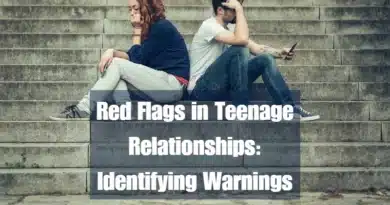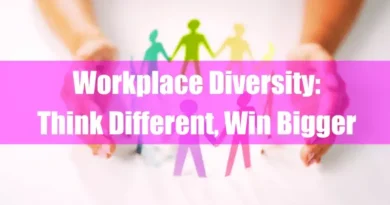Unconscious Bias & YOU!
Takeaways
| Key Points |
|---|
| Unconscious bias, or implicit bias, refers to the hidden prejudices and stereotypes that unconsciously influence our perceptions and actions, often resulting in unfair treatment. |
| Unlike conscious prejudice, which is deliberate and intentional, unconscious bias operates automatically and subtly, impacting decisions in areas like hiring, education, and healthcare. |
| It manifests in various ways, including affinity bias, in-group bias, gender bias, and confirmation bias, often shaped by cultural influences, media portrayals, and personal experiences. |
| Recognizing and addressing unconscious bias is crucial for fostering personal growth, improving decision-making, and creating more equitable and inclusive environments. |
| Strategies like mindfulness, structured decision-making, diversity training, and leveraging technology can help individuals and organizations mitigate bias, unlocking benefits such as enhanced creativity, stronger relationships, increased innovation, and improved organizational reputation and performance. |
Understanding Unconscious Bias
A. What is unconscious bias?
Unconscious bias, or implicit bias, refers to the hidden prejudices and stereotypes that influence our thoughts, perceptions, and behaviors without conscious awareness. These biases can be positive or negative, but they often lead to unfair and unequal treatment of others.
Unlike conscious prejudice, which involves a deliberate preference for one group over another, unconscious bias operates automatically. We may not even be aware that we hold certain biases, which can manifest subtly and significantly impact our interactions with others.
B. How does it differ from conscious prejudice?
The key distinction lies in awareness. Conscious prejudice involves a deliberate and active dislike or distrust towards a particular group. We are aware of these feelings and may even act upon them openly. Unconscious bias, on the other hand, operates on an automatic and unintentional level.
Here’s a table summarizing the key differences:
| Feature | Conscious Prejudice | Unconscious Bias |
|---|---|---|
| Awareness | Deliberate and intentional | Unconscious and unintentional |
| Formation | Develops through experiences and beliefs | Formed through implicit learning, socialization, and stereotypes |
| Expression | Overt and explicit | Subtle and implicit |
1. Examples of unconscious bias in everyday life:
Unconscious bias can manifest in various ways in our daily lives. Here are a few examples:
- Affinity Bias: We gravitate towards people with similar characteristics, like background, interests, or experiences. This can be seen in friend groups with similar hobbies or humor.
- In-Group Bias: We favor members of our social groups, like our family, colleagues, or sports team fans. This can lead to teams promoting colleagues they went to school with or fans giving the benefit of the doubt to a player from their hometown.
- Out-Group Bias: The flip side of in-group bias is that we tend to disfavor people from different social groups. This can manifest in social situations where we might feel less comfortable talking to someone from a different cultural background or unconsciously exclude them from conversations.
- Anchoring Bias: We give too much weight to the first information we learn. For example, if you see a used car priced high initially, a lower subsequent price might seem like a good deal, even if it’s still above market value.
- Conformity Bias: We feel pressure to follow the crowd, even if it goes against our beliefs. This can be seen in teenagers who might wear certain clothes or listen to specific music because it’s popular with their friends.
- Gender Bias: We hold unconscious stereotypes about what men and women are good at. This can affect hiring decisions where a woman might be overlooked for a leadership role.
- Name Bias: We favor candidates with familiar or culturally aligned names. Studies have shown resumes with stereotypically “white” names might get shortlisted more often.
- Patronization Bias: We treat someone with a condescending or oversimplified approach, often based on perceived lower intelligence. This can be seen in interactions with someone from a different socioeconomic background.
- Confirmation Bias: We seek information that confirms our beliefs and disregards information that contradicts them. This can be seen in political discussions where people only follow news sources that align with their views.
- Stereotype Threat: The anxiety that arises from the potential to confirm a negative stereotype about your social group. This can affect test performance for students who worry about confirming stereotypes about their race or gender.
- Warmth Bias: We associate positive qualities with warmth and friendliness. This can be seen when a friendly salesperson is perceived as more trustworthy.
- Availability Bias: We judge the likelihood of events based on how easily we can recall examples. If you hear a lot about car accidents in the news, you might overestimate the danger of driving, even though statistically, it’s quite safe.
- Beauty Bias: We associate attractiveness with positive qualities like intelligence or competence. This can be seen in situations like hiring, where attractive candidates might be perceived as more qualified.
- Attribution Bias: We explain someone’s behavior differently depending on their social group. For example, we might attribute a mistake by a colleague to forgetfulness but a similar mistake by someone from a different department to carelessness.
- Self-Serving Bias: We take credit for successes and blame failures on external factors. Students might attribute a good grade to their hard work but blame a bad grade on a difficult teacher.
- Automation Bias: We trust automation or technology too much, even when it leads to errors. This can be seen in overreliance on GPS navigation, which might lead you down a blocked road.
These are just a few examples, and the list of unconscious biases is quite extensive.
2. Consider these scenarios:
- A manager may unconsciously favor a male candidate over a female candidate with equal qualifications for a leadership position.
- A teacher may call on students from a certain background more frequently in class, unintentionally neglecting others.
- A doctor may have unconscious biases about a patient’s health based on age or ethnicity, affecting diagnosis or treatment recommendations.
These are just a few examples, and unconscious bias can manifest in countless ways across various social settings.
C. Where do unconscious biases come from?
Our unconscious biases are rooted in a complex interplay of influences. From a young age, societal norms and expectations embedded in our upbringing and cultural experiences shape how we perceive different groups. The media further reinforces these perceptions through stereotypical portrayals.
Our encounters with particular groups can leave lasting, sometimes skewed, impressions. Understanding these underlying factors is the first step toward effectively recognizing and mitigating unconscious bias.
D. Why is unconscious bias a problem?
Unconscious bias is a pervasive issue with far-reaching consequences. It fosters unfair treatment and missed opportunities, as disadvantaged groups may be denied jobs, healthcare, or advancement due to hidden prejudices. This hinders the creation of diverse and inclusive environments where people from all backgrounds feel comfortable participating fully. Furthermore, unconscious bias can negatively impact critical decision-making in hiring, promotions, and legal proceedings, leading to missed opportunities for qualified individuals and, ultimately, unfair outcomes.
How Can We Recognize Unconscious Bias?

Unconscious bias operates on an automatic level, making it challenging to identify. Yet, understanding our biases is crucial to mitigate their influence.
A. Can we identify our own unconscious biases?
Unmasking our hidden biases requires self-reflection and effort, but there are tools to help! We can delve into past interactions, analyzing if patterns emerge in how we connect (or disconnect) with different groups. Imagine yourself in a decision-making moment – how might unconscious biases influence your choices? Online tests like Implicit Association Tests (IATs) can offer a glimpse into these biases, but remember, they have limitations. IATs rely on reaction times and don’t capture the full picture.
Additionally, they can’t pinpoint specific biases. This is where self-awareness comes in—pay attention to your emotions and gut reactions. Discomfort or strong feelings toward a group might signal underlying assumptions worth examining. Combining these methods can uncover the unconscious biases shaping our thoughts and behaviors.
B. How can we observe unconscious bias in others?
Unconscious bias can be sneaky, but we can pick up on clues by observing someone’s behavior and communication. Look for inconsistencies in how they interact with different groups – are they friendlier towards certain backgrounds? Analyze their language – do they use generalizations or stereotypes? Finally, be mindful of microaggressions – subtle comments or jokes that might unintentionally demean a particular group based on race, gender, or other factors.
By catching these signs, we can raise awareness of potential bias and work towards a more inclusive environment.
Observing these signs can raise awareness of potential bias within a team or organization. It’s important to create a safe space for open communication about bias, fostering a culture of learning and growth.
How Can We Mitigate Unconscious Bias?

A. What strategies can we use to manage unconscious bias?
Once we recognize the presence of unconscious bias, the next step is to develop strategies to manage its influence. Here are ten approaches to consider:
- Mindfulness and awareness practices: Techniques like meditation and mindfulness training can enhance self-awareness, allowing us to identify biases before they impact our behavior.
- Challenging assumptions and stereotypes: When we encounter stereotypes about a group, we actively challenge them by seeking out information that contradicts them and engaging with diverse perspectives.
- Exposing ourselves to diverse perspectives: Consciously connect with people from different backgrounds and experiences. This can broaden your understanding and challenge existing biases.
- Utilizing bias mitigation tools: Online tools and training modules can help individuals identify and address their unconscious biases. These tools often employ role-playing scenarios or case studies to raise awareness in a safe environment.
- Seeking feedback: Ask trusted colleagues or mentors for honest feedback on your interactions and decision-making. This external perspective can illuminate potential biases you might miss.
- Utilizing structured decision-making processes: Implementing standardized criteria and rubrics in decision-making processes like hiring or promotion can help reduce the influence of individual bias.
- Employing blind review techniques: In certain contexts, such as resume reviews or grant proposals, blind review methods can help mitigate bias based on factors like name or background.
- Fostering a culture of open communication: Creating a safe space for open dialogue about bias empowers individuals to call out potential biases and work towards solutions.
- Implementing diversity and inclusion initiatives: Organizations can promote diversity and inclusion through targeted recruitment strategies, employee unconscious bias training, and mentorship programs.
- Holding ourselves and others accountable: Actively address bias when observed. This could involve providing constructive feedback or redirecting conversations towards inclusive language.
- Role-playing and simulations: Engaging in role-playing scenarios or simulations can provide a safe space to practice navigating situations where bias might arise.
- Unconscious bias training for leadership: Investing in unconscious bias training for leaders sets the tone for the organization and equips them to address bias effectively.
- Employee Resource Groups (ERGs): Providing support for Employee Resource Groups (ERGs) fosters a sense of belonging for underrepresented groups and can provide valuable insights into potential biases within the organization.
- Metrics and accountability: Monitoring progress in diversity and inclusion initiatives helps hold organizations accountable for mitigating unconscious bias.
B. How can technology Play a Role in mitigating unconscious bias?
Technology offers promising solutions to combat unconscious bias in decision-making. One key area is algorithmic fairness. As algorithms become more prevalent, actively identifying and removing biases embedded within them is crucial. Additionally, technology platforms can be leveraged to promote diverse candidate pools. Anonymizing resumes or utilizing skills-based assessments during filtering can mitigate bias based on name or background. However, it’s important to remember that technology is a tool, and responsible use and awareness of its limitations are essential.
Combining these strategies and fostering a culture of continuous learning and reflection can create a more equitable and inclusive environment.
What are the Benefits of Addressing Unconscious Bias?

Addressing unconscious bias offers significant advantages for both individuals and organizations.
A. How can addressing unconscious bias benefit individuals?
Confronting and mitigating unconscious bias empowers individuals in several ways:
- Fostering personal growth and self-awareness: By acknowledging and addressing unconscious biases, we gain a deeper understanding of ourselves and how our biases might influence our thoughts and behaviors. This self-awareness allows us to make more conscious and equitable choices.
- Building stronger relationships with diverse groups: When we challenge our biases and become more open-minded, we can build stronger relationships with people from different backgrounds. This fosters a sense of belonging and inclusivity for everyone involved.
- Creating a more equitable and inclusive environment: By taking responsibility for our biases, we build a fairer and more inclusive environment for ourselves and others. This fosters a sense of fairness and respect for everyone’s experiences and perspectives.
- Improving decision-making: Recognizing and mitigating unconscious bias allows us to make more objective and informed decisions. This can benefit individuals in various aspects of life, from personal relationships to professional endeavors.
- Unlocking New Opportunities: By recognizing your biases, you can avoid missing out on opportunities for yourself and others. You might be more open to considering different career paths or collaborating with people you previously overlooked.
- Boosting Creativity and Innovation: A richer pool of ideas results when diverse perspectives are valued and heard. By mitigating bias, you can tap into your hidden creativity and contribute to a more innovative environment.
- Enhancing Empathy and Emotional Intelligence: Recognizing bias helps you understand how others might feel based on their background. This fosters empathy and emotional intelligence, strengthening interpersonal and professional relationships.
- Building Confidence and Self-Esteem: When you take responsibility for your biases and actively work to address them, you demonstrate self-awareness and a commitment to growth. This can boost your confidence and self-esteem.
B. How can addressing unconscious bias benefit organizations?

Organizations that actively address unconscious bias reap numerous benefits:
- Enhanced creativity and innovation: Diverse teams with various perspectives can foster greater creativity and innovation. When unconscious bias is minimized, all team members feel empowered to contribute their ideas and perspectives, leading to a richer pool of solutions.
- Improved decision-making and problem-solving: By mitigating bias in decision-making processes, organizations can ensure the selection of the best talent and make more informed choices. This can lead to improved problem-solving and overall performance.
- Increased employee engagement and satisfaction: Employees who feel valued and respected for their unique contributions, regardless of background, are likelier to be engaged and satisfied with their work environment. This can lead to increased productivity and loyalty.
- Attracting and retaining top talent: Organizations committed to diversity and inclusion are likelier to attract and retain top talent from diverse backgrounds. Addressing unconscious bias is essential for building a fair and equitable workplace.
- Enhanced reputation and brand image: Organizations championing diversity and inclusion initiatives gain a positive reputation in the marketplace. This can lead to increased customer loyalty and investor confidence.
- Reduced legal risk: Unconscious bias can lead to discriminatory practices, resulting in costly lawsuits and damaging the organization’s reputation. Proactively addressing bias helps mitigate these risks.
- Improved customer satisfaction: Diverse workforces can better understand and cater to the needs of a diverse customer base, leading to increased customer satisfaction and loyalty.
- Enhanced global competitiveness: In a globalized economy, organizations that embrace diversity are better positioned to navigate different markets and cultures, gaining a competitive edge.
- Stronger employer brand: Organizations known for their commitment to diversity and inclusion attract a wider pool of qualified candidates, making them a more attractive employer.
- Boosted employee morale: When employees feel valued and respected for their unique perspectives, it fosters a more positive and collaborative work environment, leading to higher morale and productivity.
Addressing unconscious bias is not just about being politically correct; it’s a strategic move with demonstrably positive outcomes for individuals and organizations.
By actively mitigating bias, we can create a more equitable and successful future for all.
FAQ
What is an Implicit Stereotype?
An implicit stereotype is an unconscious association between a group and certain attributes or behaviors. These automatic associations can influence perceptions and actions without conscious awareness, leading to biased judgments and behaviors. For example, associating men with leadership roles and women with nurturing roles can affect hiring decisions and workplace dynamics.
What does the term ‘Bias Blind Spot’ mean?
The bias blind spot is the cognitive bias where individuals recognize biases in others but fail to see the impact of biases on their own judgment. This phenomenon can hinder personal growth and perpetuate discriminatory behaviors, as individuals may not take steps to mitigate their own biases.
Can you explain what an Implicit Attitude is?
An implicit attitude refers to the automatic and unconscious evaluations or feelings towards a person, object, or concept. These attitudes can be positive or negative and influence behavior without conscious awareness. For example, someone might unconsciously associate certain ethnic groups with specific traits, affecting their interactions.
What is Algorithmic Bias?
Algorithmic bias occurs when computer algorithms produce results that systematically favor or disadvantage certain groups. This bias can arise from biased training data, flawed design, or unintended consequences of algorithm deployment, leading to unfair treatment in areas like hiring, lending, or criminal justice.
What does Affinity Bias entail?
Affinity bias, also known as similarity bias, is the tendency to favor individuals who share similar interests, backgrounds, or experiences with us. This bias can lead to homogeneity in workplaces and social circles, limiting diversity and the benefits that come with it.
Can you define Confirmation Bias?
Confirmation bias is the tendency to search for, interpret, and remember information that confirms one’s preexisting beliefs or values. This bias can reinforce stereotypes and ignore information that contradicts one’s assumptions, perpetuating unconscious biases.
What is the Halo Effect in the context of unconscious bias?
The halo effect is a cognitive bias where the perception of one positive trait influences the perception of other unrelated traits. For example, perceiving someone as attractive may lead to the assumption that they are also intelligent and competent, affecting objective judgment.
What does the Horn Effect refer to?
The horn effect is the opposite of the halo effect; it’s the tendency to allow one negative trait to influence the perception of other unrelated traits. For instance, if someone is late to a meeting, they might be perceived as irresponsible in other aspects, regardless of their actual performance.
Can you explain what Stereotype Threat is?
Stereotype threat is the situational predicament where individuals feel at risk of conforming to stereotypes about their social group. This anxiety can impair performance and perpetuate the very stereotypes the individuals wish to avoid, creating a cycle of bias and underachievement.
What is meant by In-group Bias?
In-group bias is the tendency to favor members of one’s own group over those in other groups. This bias can lead to preferential treatment of in-group members and discrimination against out-group members, affecting fairness and equity in various settings.
What does the term ‘Anchoring Bias’ mean?
Anchoring bias refers to the human tendency to rely heavily on the first piece of information encountered (the “anchor”) when making decisions. In the context of unconscious bias, initial impressions or stereotypes can serve as anchors, influencing subsequent judgments and decisions.
Can you define Attribution Bias?
Attribution bias is the systematic errors made when people evaluate or try to find reasons for their own and other’s behaviors. For example, attributing one’s own failures to external factors while attributing others’ failures to their character can perpetuate negative stereotypes and biases.
What is the Availability Heuristic concerning unconscious bias?
The availability heuristic is a mental shortcut that relies on immediate examples that come to mind. If certain stereotypes are more readily recalled, they can influence judgments about individuals or groups, leading to biased decisions based on limited information.
What does ‘Groupthink’ mean in the context of bias?
Groupthink is a psychological phenomenon where the desire for harmony or conformity in a group leads to irrational or dysfunctional decision-making. In such environments, dissenting opinions are suppressed, and biases go unchallenged, reinforcing existing prejudices.
Can you explain what ‘Systemic Bias’ is?
Systemic bias refers to the inherent tendencies within institutions or systems that favor certain groups over others. These biases are embedded in policies, practices, and norms, leading to unequal opportunities and outcomes for marginalized groups.









